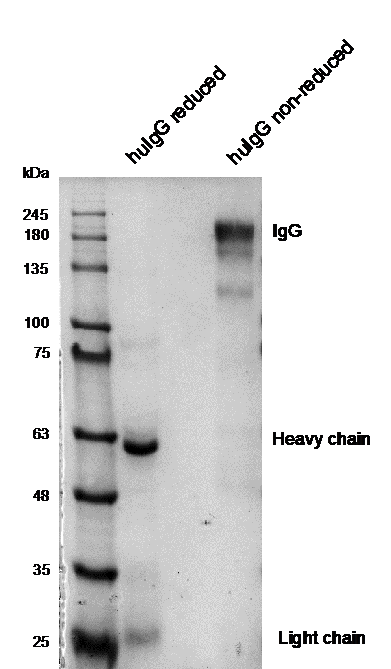
Cat. #153533
Anti-Stat1Alpha-C
Cat. #: 153533
Unit size: 100 ug
Target: C terminus of signal transducer and activator of transcription 1
Class: Polyclonal
Application: IP
Reactivity: Human
Host: Rabbit
£300.00
This fee is applicable only for non-profit organisations. If you are a for-profit organisation or a researcher working on commercially-sponsored academic research, you will need to contact our licensing team for a commercial use license.
Contributor
Inventor: Thomas Decker
Institute: University of Vienna
Tool Details
*FOR RESEARCH USE ONLY (for other uses, please contact the licensing team)
- Name: Anti-Stat1Alpha-C
- Alternate name: STAT1, CANDF7, IMD31A, IMD31B, IMD31C, ISGF-3, STAT91, signal transducer and activator of transcription 1
- Research fields: Cell signaling and signal transduction
- Class: Polyclonal
- Conjugation: Unconjugated
- Reactivity: Human
- Host: Rabbit
- Application: IP
- Description: In response to cytokines and growth factors, STAT family members are phosphorylated by the receptor associated kinases, and then form homo- or heterodimers that translocate to the cell nucleus where they act as transcription activators. STAT1 can be activated by several ligands such as Interferon alpha, Interferon gamma, Platelet Derived Growth Factor, Interleukin 6 or Epidermal Growth Factor. STAT1 has a key role in expressing many genes involved in survival of the cell, viability or pathogen response. Through alternative splicing there are two possible transcripts which encode 2 isoforms of STAT1. The compound, diallyl disulphide, found in garlic can induce STAT1 phosphorylation.
- Immunogen: GST fusion protein comprising the 39 C-terminal amino acids of Stat1a
Target Details
- Target: C terminus of signal transducer and activator of transcription 1
- Target background: In response to cytokines and growth factors, STAT family members are phosphorylated by the receptor associated kinases, and then form homo- or heterodimers that translocate to the cell nucleus where they act as transcription activators. STAT1 can be activated by several ligands such as Interferon alpha, Interferon gamma, Platelet Derived Growth Factor, Interleukin 6 or Epidermal Growth Factor. STAT1 has a key role in expressing many genes involved in survival of the cell, viability or pathogen response. Through alternative splicing there are two possible transcripts which encode 2 isoforms of STAT1. The compound, diallyl disulphide, found in garlic can induce STAT1 phosphorylation.
Applications
- Application: IP
Handling
- Format: Liquid
- Concentration: 0.9-1.1mg/ml
- Unit size: 100 ug
- Storage buffer: PBS with 0.02% azide
- Storage conditions: -80° C
- Shipping conditions: Shipping at 4° C
Related Tools
- Related tools: Anti-STAT1, Polyclonal [ps727]
References
- Kovarik, P., Stoiber, D., Novy, M. & Decker, T. (1998) EMBO J. 17, 3660ĂÂ3668


